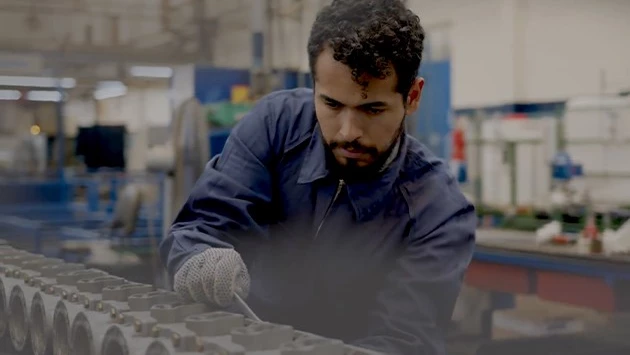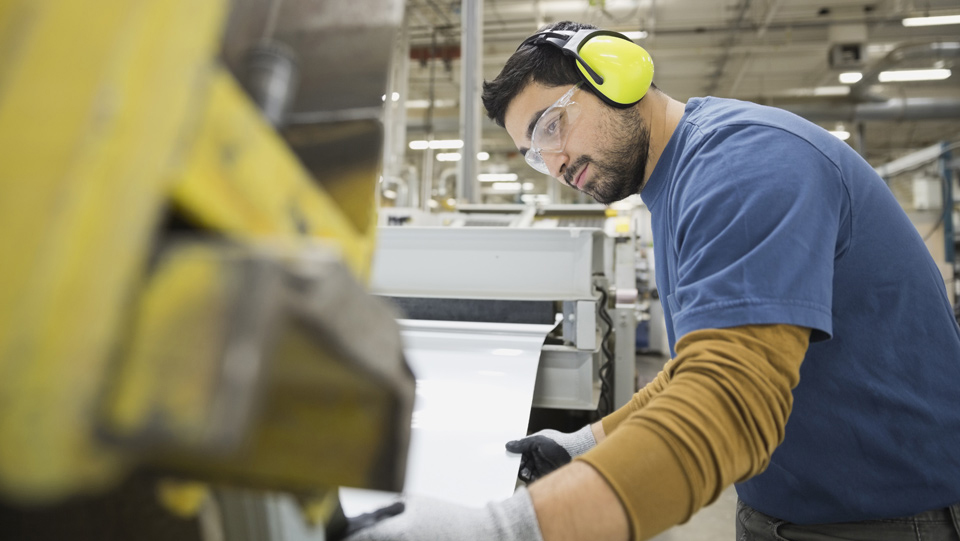How Much Excess Casualty Insurance Do Manufacturers Need?


As the costs of lawsuits continue to rise, the potential for a single runaway verdict can threaten a manufacturer’s financial viability, brand and reputation. As a manufacturer, you also face other potentially costly risk exposures, including employer’s liability and automobile liability. Buying excess casualty coverage can help protect your business when these types of risks lead to a covered claim.
What Is Excess Casualty Insurance for Manufacturers?
Excess casualty insurance is designed to give manufacturers an extra layer of protection beyond the limits of their primary liability insurance policy. This means that if the damages on a covered liability claim against your manufacturing company exceed the limits of your primary liability policy, then your excess casualty insurance is there to cover the difference, up to the limits of your excess casualty policy.
What Determines How Much Excess Casualty Coverage Manufacturers Need?
The factors that insurance professionals and manufacturers look at to determine appropriate excess casualty coverage limits include whether a firm has experience with prior large losses, what is typical for their industry and whether anything has changed in their business that might affect their risk exposure, according to Trish Carpenter, Travelers Regional Underwriting Officer. “The larger the entity, the larger the exposure,” said Carpenter. Beyond the increased number of employees, facilities and product lines, larger businesses are more likely to have national and global reach, making them subject to different laws and regulations.
As an industry, manufacturers tend to buy higher excess casualty limits than other industries, including wholesale, retail, transportation and service industries, according to Travelers’ 2018 Excess Casualty portfolio data. Of course, each business has different needs; there’s no one-size-fits-all solution. Let’s look at five leading factors that can help inform your need for coverage.
How Much Excess Casualty Coverage Do I Need? Five Questions to Help You Decide.
1. Are You Prepared for the Total Cost of a Products Liability Claim?
Manufacturers of component parts are vulnerable to products liability claims. “You might think that your product is well-guarded, but when it is part of a large piece of machinery, there’s the potential for damages,” Carpenter said. If your product is going into someone else’s product, you could be included in a claim as a contributing cause of loss. Potential claims can include bodily injury and property damage losses.
Consider increasing your excess casualty coverage limits. “There is a very real potential for a large verdict against a manufacturer,” said Carpenter. The total value of responding to a products liability claim may exceed the limits of primary insurance coverage. Even if your product isn’t ultimately to blame, defending a products liability claim can be devastating for a manufacturer. Think of the costs in time, energy and resources that could be needed to respond to a claim, as well as the dollar settlement, plus the potential damage to your company’s brand and reputation.
2. Do You Manufacture Consumer Products or Food?
Excess casualty coverage can be an important way to help protect your business from a large loss. If your product is alleged to have caused widespread bodily injury or property damage, it has the potential to receive significant media coverage, which can damage your brand. “We’ve seen it over and over again,” said Carpenter, who suggests paying attention to other lawsuits in your industry that have the potential to influence future litigation. There’s also the potential for class-action lawsuits, which can mean high claim costs and drive increased limits.
Crisis Management Services Expenses coverage is part of Travelers’ excess casualty insurance product, which helps deal with unexpected crisis events like products liability cases and other incidents that may result in significant adverse regional or national media coverage. This coverage pays for certain expenses of a public relations firm or crisis management firm to help mitigate negative publicity and protect your business, brand and reputation in the event of a crisis.
3. Has Your Company Acquired Another Manufacturer or Product Line?
Manufacturers may face liabilities related to discontinued products from companies and product lines that they have acquired. There can still be harmful effects to your brand, even if your company wasn’t originally involved in manufacturing the product. The time might be right to reevaluate your liability coverage.
“Sometimes manufacturers aren’t aware of liabilities that they might have taken on as the result of acquiring a new company,” Carpenter said. A merger or acquisition is an appropriate time for a manufacturer to reassess exposures and increase their excess liability coverage limits.
4. Do Employees Drive to Distribute Your Products?
Excess casualty coverage could play an important role in protecting your business after an auto liability claim. Auto liability impacts most industries. The larger the fleet, the greater the risk to the manufacturer. A single car accident can lead to a multimillion-dollar lawsuit. And distracted driving is increasing the risks of auto accidents in a major way. Having proper distracted driving protocols in place, including disciplinary action when an employee violates the policy, can help address this risk.
Contracting out delivery could reduce the risk, but unexpected issues can still arise. In one case, a manufacturer was alleged to be responsible for determining the routes used and how goods were delivered, creating a significant auto liability exposure that the company was not anticipating.
5. Do You Use Emerging Tech in Your Manufacturing Production Process?
As the Industrial Internet of Things evolves, new risks are continuously emerging, including those related to privacy and worker safety. As the technology available to manufacturers becomes more complex and interconnected, they could be responsible for ensuring safeguards are in place to mitigate data security risks at every point where data is gathered, stored and shared. There are also products liability risks if wearable devices and other tech are incorporated into finished products.
Consider a Contractual Risk Transfer Program to Help Manage Your Risks
When another company’s products or services are related to your product and cause injuries or property damage, contractual risk transfer can help protect you from the financial costs of the ensuing liability claims. For example, if you purchase components from a supplier that are not manufactured to design specifications, a clearly written contract with the supplier can help transfer your risk to the supplier in case the products cause harm to your customers.
What Is Excess Casualty Insurance?
If the damages from a large claim exceed the limits of your primary liability coverage, your business requires an extra layer of protection. Excess casualty insurance can help safeguard your business from potentially devastating financial losses due to a large liability claim.
Working With an Excess Casualty Carrier
Travelers’ Excess Casualty team specializes in the manufacturing industry and covers a wide cross-section of manufacturing business types and sizes, from small to midsized and large to multinational. We offer worldwide coverage territory for manufacturers in an increasingly global marketplace.
“Even if we’re not your primary carrier, Travelers offers industry-specific tools and resources to minimize risk and help prevent losses,” Carpenter added. These include Safety Academy classes on industry-related topics, such as industrial ergonomics and supervisory safety leadership development. Travelers' Risk Control On-Demand® consulting service lets you share screens to promptly resolve issues. Contact your insurance agent to discuss your specific coverage needs. Or visit the travelers.com Excess Casualty page to learn more.



